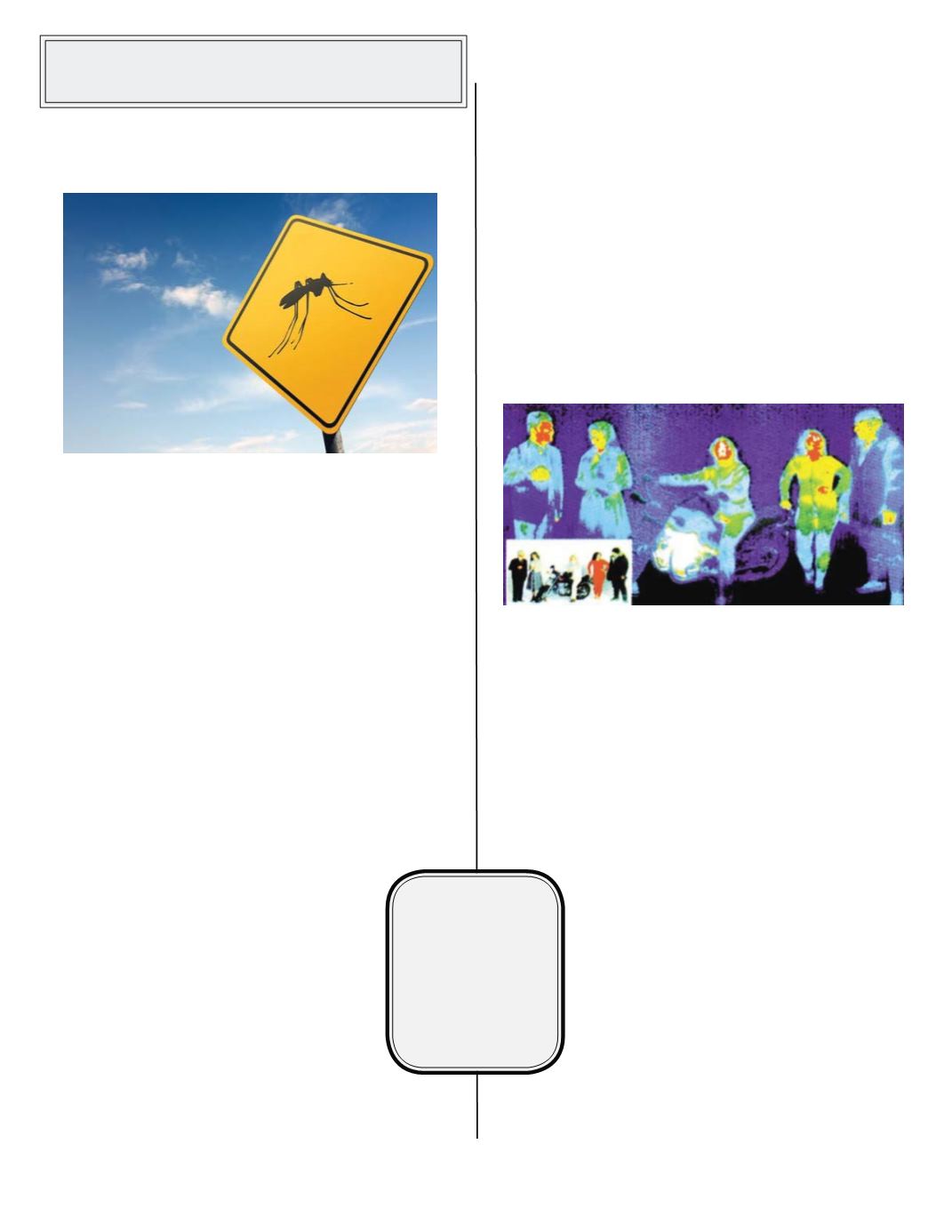

Page 21
The Islamic Bulletin
Volume XXV No. 29
T
HE
M
AGNIFICENT
C
REATION OF
THIS
TINY
M
OSQUITO
o,QGHHG $OODK LV QRW WLPLG WR SUHVHQW DQ H[DPSOH WKDW
RI D PRVTXLWR RU ZKDW LV VPDOOHU WKDQ LW p
(Qur’an 2:26).
Allah’s reference to the mosquito in the Qur’an is unique
among His references to animals. “Allah does not hesitate
to mention the mosquito as an example because of what is
carried above it.“ One of the strangest discoveries of mod-
ern science is that a very small microscopic insect lives on
the backs of mosquitos. 1400 years ago, the Qur’an told us
about this microscopic insect! In other verses in the Qur’an,
Allah mentions other small animals, like the fly and the
spider. However, when Allah narrates parables about them,
the idolaters objected. They think that they found what they
were looking for: the opportunity to discredit the truth of
the Qur’an.
Modern science discovered, much to its amazement, that
an adult female mosquito is an extremely complicated bio-
logical organism:
Anatomy:
The mosquito flaps its wings about 500
times per second to realize a speed of flight of approximate-
ly three miles per hour. Only the female mosquito sucks
blood, a thing she does to feed her eggs. She obtains her
own nourishment from the nectar of flowers. In its head, the
mosquito has 100 eyes, 48 teeth, and 6 cutting implements
in its snout—each with a unique function. In its torso, it has
3 complete hearts with 3 wings on the exterior
of its chest.
Chemical sensors:
By detecting carbon
dioxide and lactic acid, special chemical sensors
in the mosquito enable it to find prey which is
located up to 100 feet away from itself. Mam-
mals and birds give off these gases when they
breathe. Certain chemicals in mammalian sweat
also attract mosquitos.
Visual sensors:
Mosquitos can detect
color and color contrast. Thus, the wearing of
clothing that contrasts with the background, and moving
while wearing such clothing, facilitates the mosquito’s ability
to see and target its prey. If something moves, that means to
the mosquito that the thing is alive with the desired, needed
blood flowing in its veins. In the dark, the mosquito’s X-ray
vision distinguishing the skin of a human as a violet-col-
ored sheath. It then injects a liquid local anesthetic into the
human’s skin to help it insert its snout into the human’s skin
without its human prey feeling it. Then, the mosquito can
sucking the human’s blood uninterrupted. To provide for the
fact that it does not like all types of blood, it has the ability to
test its prey’s blood prior to extracting it. It also has the ability
to thin the blood to speed up its flow so that it can be drawn
out of the body faster, before the anesthetic wears off and the
person perceives the intrusion.
Heat sensors:
Mosquitos detect heat. These special
sensors help them find warm-blooded creatures, i.e., humans
and other mammals when they are within a certain distance.
Sensitive Receptors Sense the Location of Prey in the Dark
Even if a man is sleeping in a pitch-dark room, a mosquito
can find him easily. Even if a person’s entire body is under
their bed covers, with only a hand sticking out, the mosquito
can find that small piece of flesh and extract its blood, without
waking the person up. The mosquito has the ability, by the
Will of its Creator, to seize a prey millions of times larger than
itself—in the dark.
One of the ways the mosquito does this is with heat-sensitive
sensors; they perceive heat given off by the body. The mos-
quito’s heat-sensitive receptors are as effective as that of our
military technology, particularly in the dark. These organs,
known as “tarsi,” are located in the forelegs. When the tarsi
detect heat waves from a body, the mosquito is drawn to its
target unerringly. With heat detectors, the mosquito can also
find the areas under the skin where the blood is warmest, as
in the veins as compared to the tissue. In the pitch-dark, a
mosquito can locate the exposed parts of a sleeping person
and the veins closest to the skin.
Amino acids, amines, ammonia, and lactic acid found
in the blood also attract the mosquito. Even when these sub-
stances are diluted 2,000 times, the produce is 5 times more
attractive to mosquitos than distilled water. The
mosquito is like a warplane loaded with detectors
for heat, gas, humidity, and odor. The mosquito
can identify prey 25 to 30 meters (82-98 feet)
away. Such a unique and powerful structure
cannot be the result of a chain of coincidences.
Obviously, despite its tininess, the mosquito is not
insignificant but complex and fascinating,. In fact,
its tininess adds to the mystique of it unique form
of life. Thus, we can understand why Allah refers
to the mosquito as wondrous and miraculous.
We know the female mosquito sucks blood
for the protein needs of her eggs. To obtain that
blood, the mosquito must first find a source of
blood, i.e., prey. Evolutionary theory claims that the mosquito
acquired its attributes and skills in stages. But, the mosquito
could not afford to have thousands of years for its body to
acquire its heat receptors. It had to have its system of percep-
tion from the beginning for it to find its prey, or its eggs would
7KH PRVTXLWR KDV
H\HV WHHWK
DQG FXWWLQJ LPSOH
-
PHQWV LQ LWV VQRXWs
HDFK ZLWK D XQLTXH
IXQFWLRQ ,Q LWV WRUVR
LW KDV FRPSOHWH
KHDUWV ZLWK ZLQJV
RQ WKH H[WHULRU RI LWV
FKHVW
















